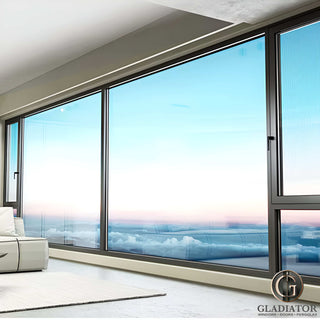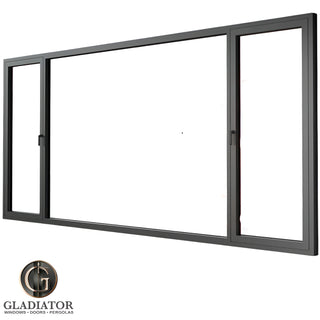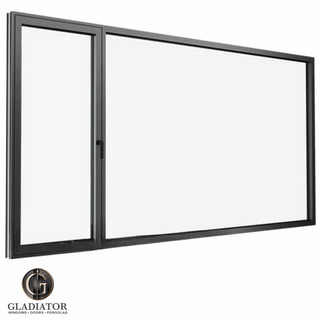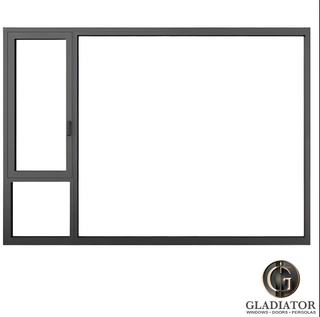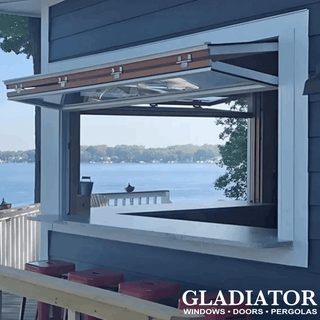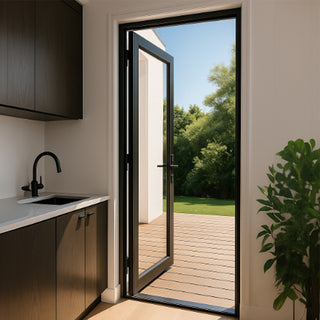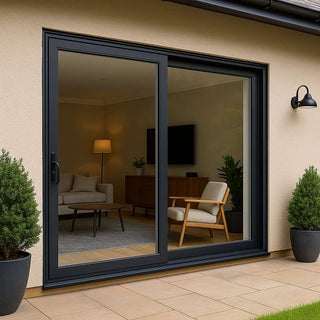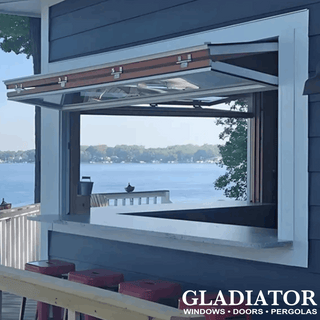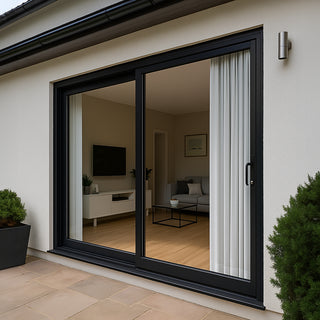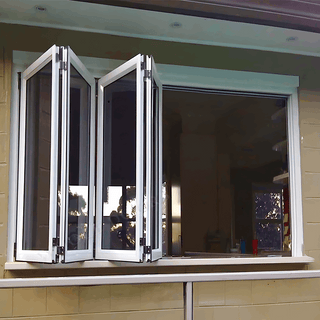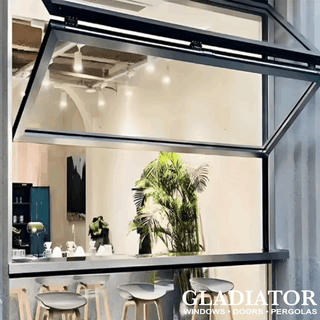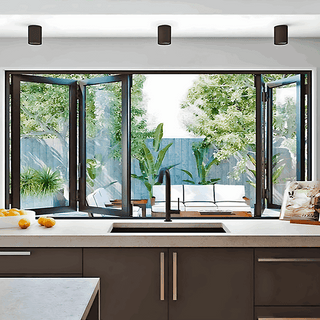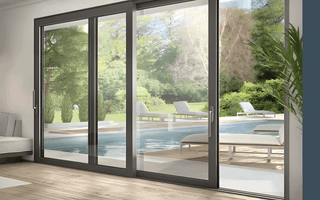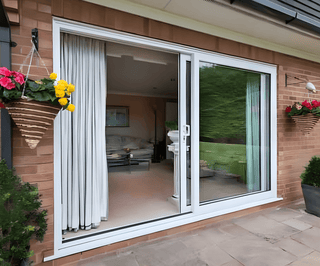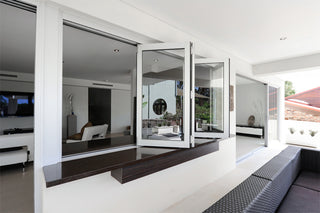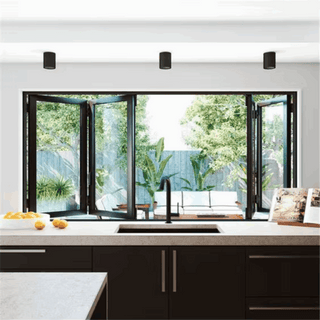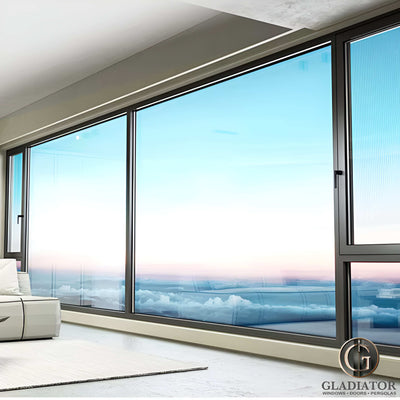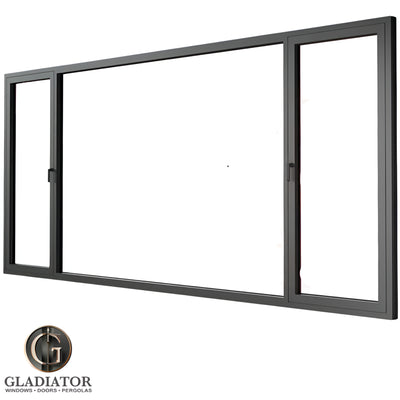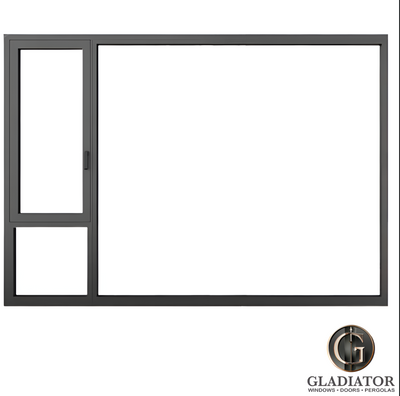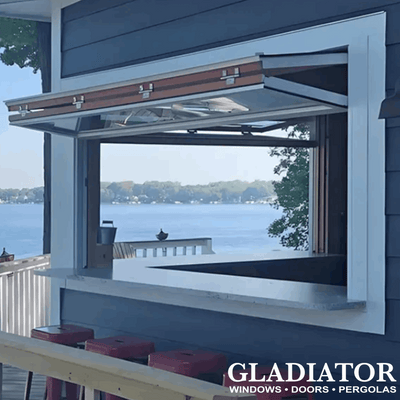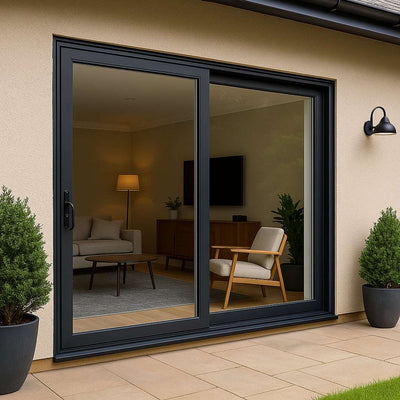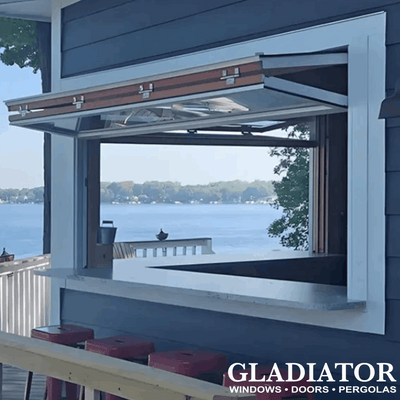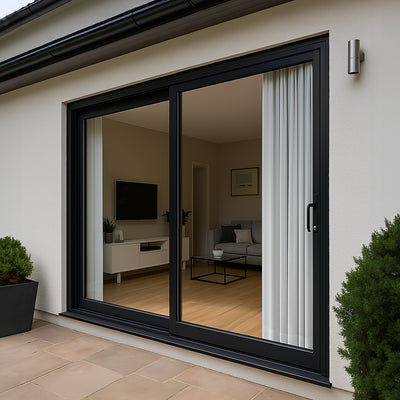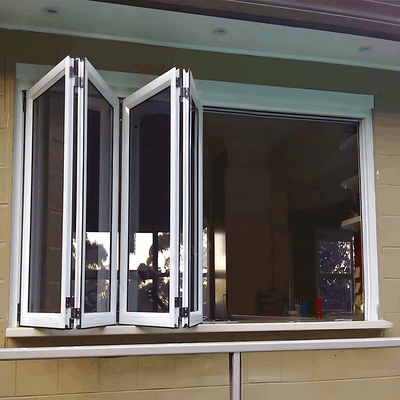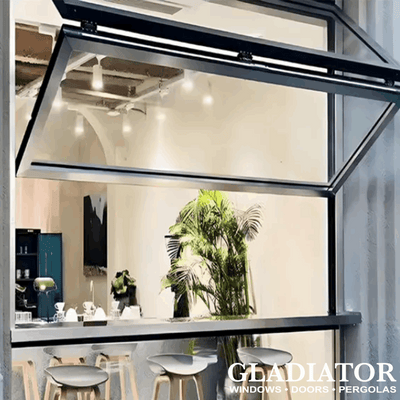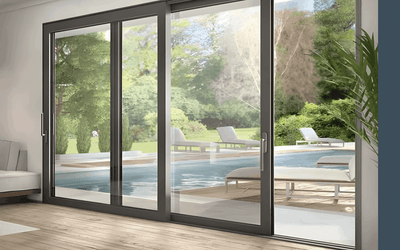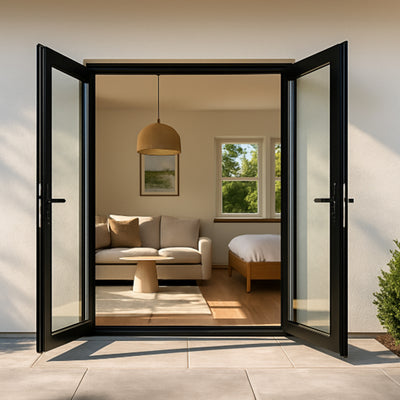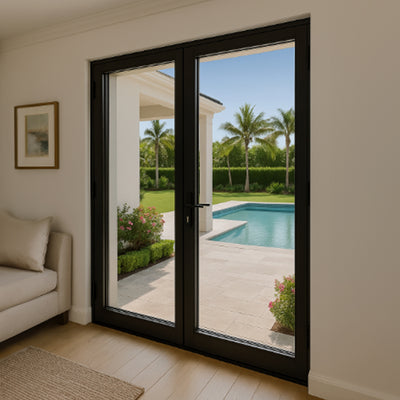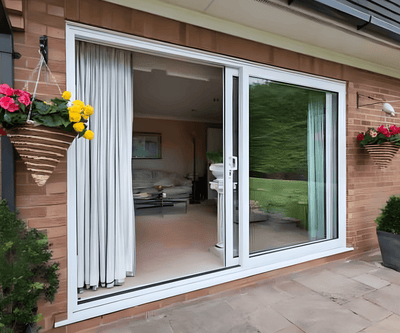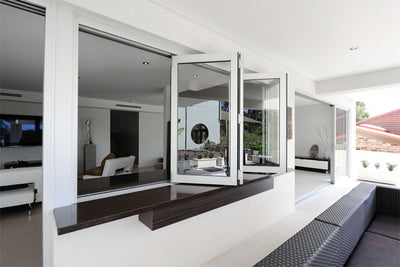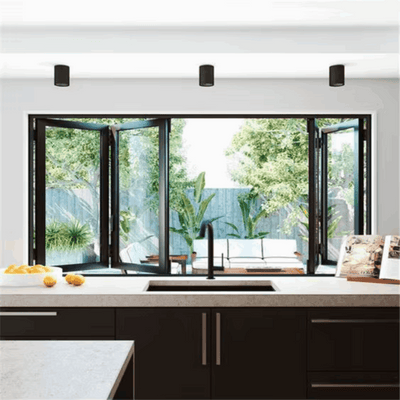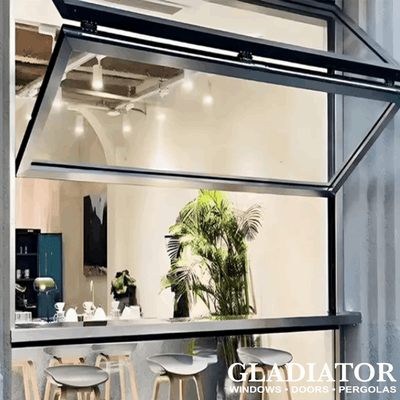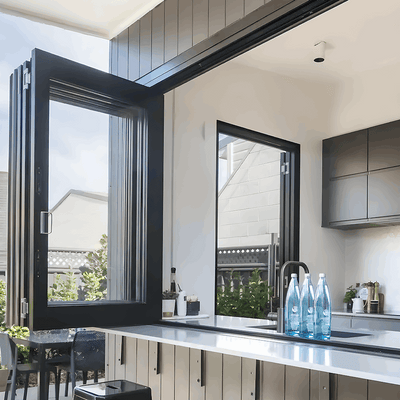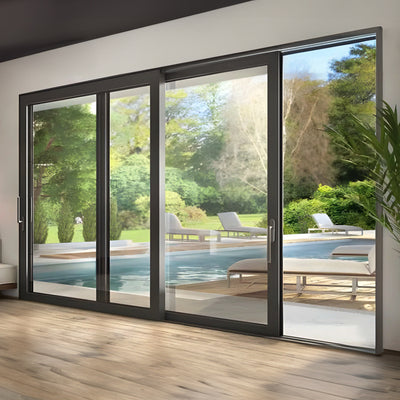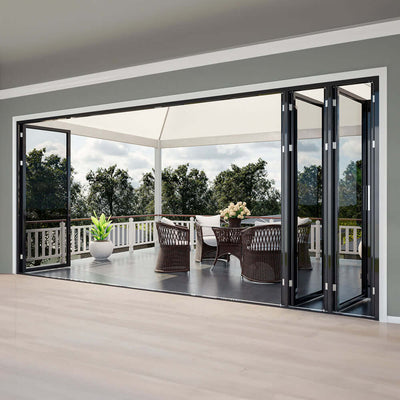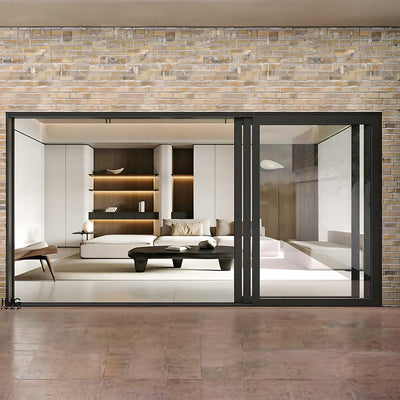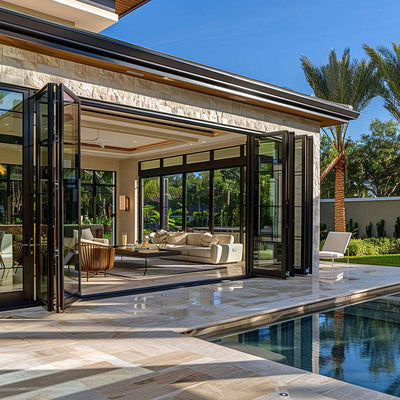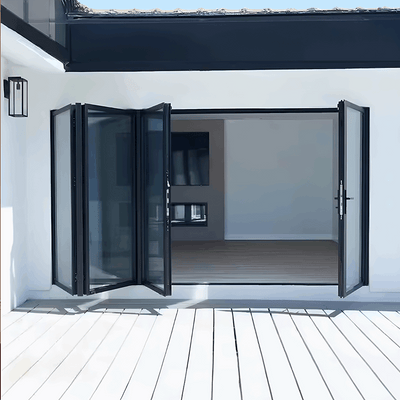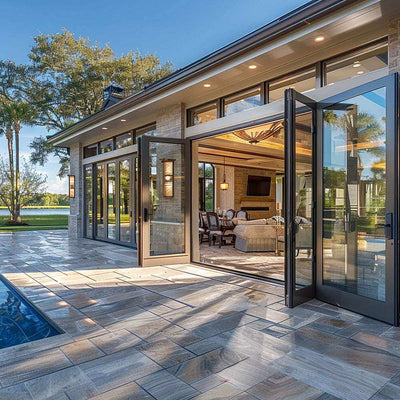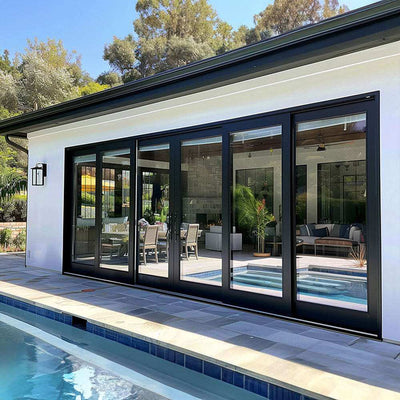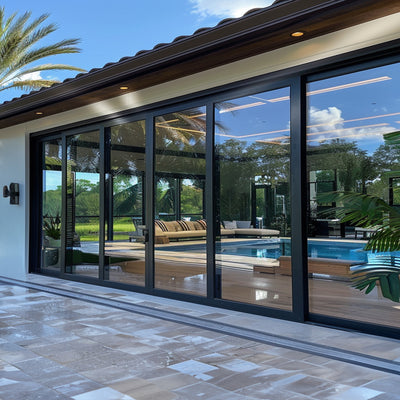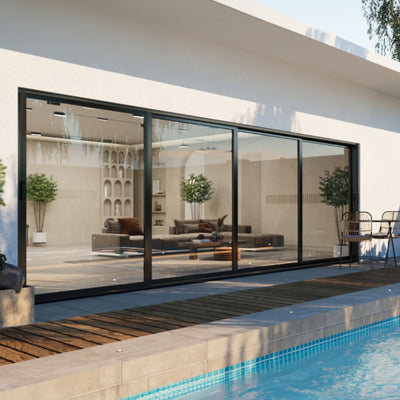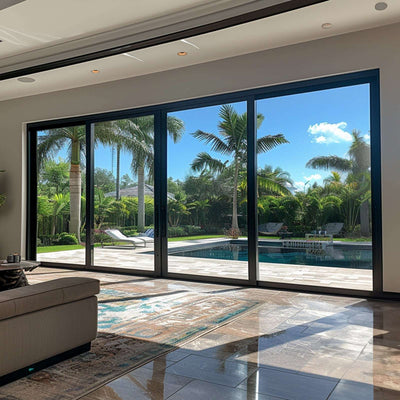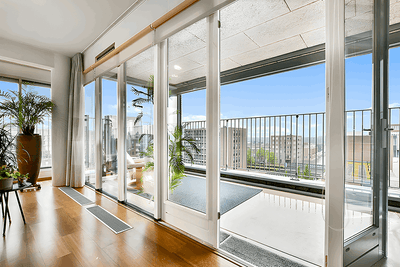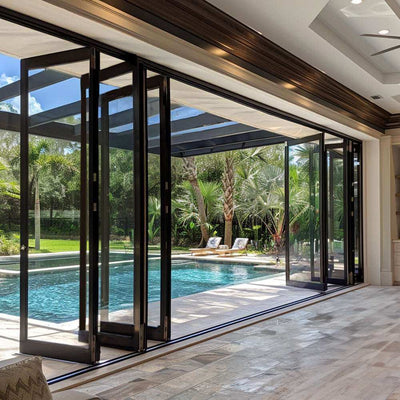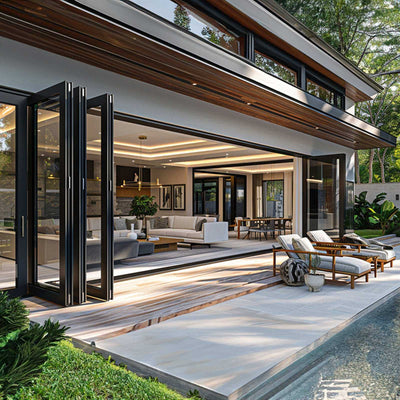Boost Your Home's Efficiency with Energy-Saving Windows
Want lower energy bills and a more comfortable home? Your windows are key. This listicle reveals eight ways to make windows more energy efficient, from quick fixes to major upgrades. Learn how to optimize your windows for maximum energy savings, whether you're renovating, building new, or simply seeking improvements for your current home. Discover how double-paned windows, low-e coatings, and other strategies can transform your property into an energy-efficient haven.
1. Installing Double or Triple-Pane Windows
One of the most effective ways to make windows more energy efficient is by installing double or triple-pane windows. This upgrade offers a significant return on investment through reduced energy bills and increased home comfort. But what exactly are multi-pane windows and how do they work? Essentially, they consist of two or three layers of glass separated by air or gas-filled spaces. These sealed spaces act as insulation barriers, dramatically reducing heat transfer between the inside and outside of your home. This makes them far superior to single-pane windows when it comes to energy efficiency.
Single-pane windows allow significant heat loss in the winter and heat gain in the summer, forcing your HVAC system to work overtime. Double and triple-pane windows address this issue directly. The multiple layers of glass, combined with the insulating air or gas-filled gaps, create a formidable barrier against temperature fluctuations. The sealed construction also prevents air infiltration, further enhancing their insulating properties. These features translate to significant energy savings, potentially reducing energy loss by 25-50% compared to single-pane windows. Beyond energy savings, multi-pane windows also offer better noise reduction, creating a quieter and more peaceful indoor environment.
Several manufacturers offer high-quality multi-pane windows. Pella's Lifestyle Series, for example, boasts triple-pane windows achieving U-factors as low as 0.17. Andersen's 400 Series double-pane windows are another popular choice and are commonly used in Energy Star certified homes. For those aiming for the highest levels of energy efficiency, Marvin's Ultrex fiberglass windows with triple glazing are often used in Passive House construction. Learn more about Installing Double or Triple-Pane Windows
While the upfront investment for double or triple-pane windows can be higher ($300-800+ per window) than single-pane options, the long-term benefits are undeniable. The reduced heating and cooling costs quickly offset the initial investment, ultimately increasing your home's value. Furthermore, the enhanced comfort provided by reduced drafts and better insulation makes for a more pleasant living environment.
However, it's essential to be aware of the potential drawbacks. Multi-pane windows are heavier than single-pane windows, which may require frame reinforcement in some cases. There's also the potential for seal failure over time, although modern window technology has significantly mitigated this risk. Lastly, the installation process is more complex and typically requires professional contractors.
To help visualize the energy savings, let’s look at a comparison of window types and their respective energy loss reduction. The following bar chart compares the energy loss reduction achieved by different window types.
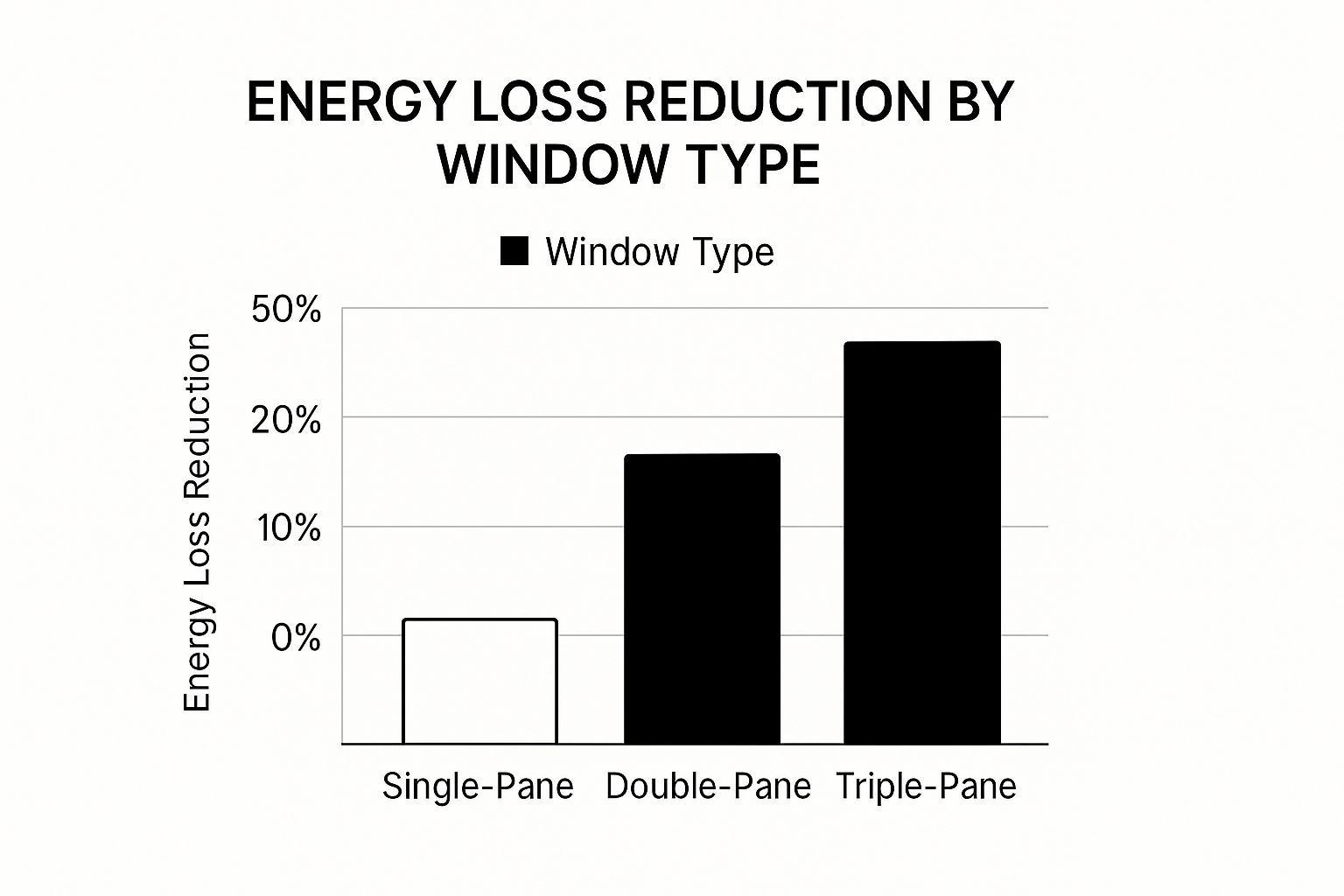
As the chart clearly demonstrates, double-pane windows can reduce energy loss by 25% compared to single-pane windows, while triple-pane windows achieve a remarkable 50% reduction.
When considering multi-pane windows, there are a few important tips to keep in mind. Choose windows with U-factors of 0.30 or lower for maximum efficiency. The U-factor measures how well a window prevents heat from escaping. The lower the U-factor, the better the window's insulating properties. Consider your climate zone when deciding between double and triple-pane windows. Colder climates typically benefit more from triple-pane windows, while double-pane windows may suffice in milder regions. Look for Energy Star certification for your specific region to ensure the windows meet the necessary energy efficiency standards. Finally, ensure proper installation by hiring qualified professional contractors. Don't hesitate to explore financing options or rebates offered by utility companies to help offset the initial cost. By carefully considering these factors, you can make an informed decision that significantly improves the energy efficiency and comfort of your home.
2. Applying Low-E (Low-Emissivity) Coatings
One of the most effective ways to make windows more energy efficient is by applying Low-E (Low-Emissivity) coatings. These coatings are a game-changer in window technology, offering a significant boost to energy performance without compromising natural light. Whether you're building a new home, renovating an existing one, or managing a commercial property, understanding Low-E coatings is crucial for optimizing energy efficiency and creating a more comfortable indoor environment. This upgrade is a smart investment that pays off through lower energy bills and increased property value.
Low-E coatings are microscopically thin, virtually invisible metallic layers applied to the surface of window glass. These coatings work by reflecting long-wave infrared radiation, the kind of heat generated by objects like furniture, people, and even the sun. Think of it like a mirror for heat – reflecting it back towards its source. In the winter, this means keeping precious indoor heat inside, while in the summer, it reflects the sun's heat back outwards, preventing it from entering your home. Critically, however, Low-E coatings allow visible light to pass through, so you still enjoy natural daylight without the unwanted heat gain or loss. This selective filtering is what makes Low-E coatings so effective in making windows more energy efficient.
Low-E coatings are available in two primary varieties: hard coat (pyrolytic) and soft coat (sputtered). Hard coat coatings are applied during the glass manufacturing process, making them extremely durable and scratch-resistant, ideal for harsh climates and high-traffic areas. Soft coat coatings, on the other hand, are applied in a vacuum chamber after the glass is made. While slightly more delicate, they offer superior energy performance due to their more complex layering.
The placement of the Low-E coating on the glass surface (surface #2 or surface #3, with #1 being the exterior-most surface) also plays a vital role in optimizing performance for different climates. In warm climates, applying the Low-E coating to surface #2 (the interior-facing surface of the outer pane of glass in a double-paned window) is most effective for reflecting solar heat back outwards. In colder climates, placing the coating on surface #3 (the exterior-facing surface of the inner pane of glass) helps to reflect interior heat back into the room. Understanding this distinction is key to maximizing energy savings in your specific location.
The benefits of using Low-E coatings are substantial. They can reduce heat transfer by up to 50%, significantly lowering heating and cooling costs. By maintaining natural light transmission, they reduce the need for artificial lighting, further contributing to energy savings. Additionally, Low-E coatings block a significant portion of harmful UV radiation, protecting interior furnishings, flooring, and artwork from fading and sun damage. Compared to full window replacement, applying Low-E coatings, especially in the form of retrofit films, is a relatively cost-effective way to achieve substantial energy efficiency improvements.
There are, however, a few considerations to keep in mind. Depending on the type and placement of the Low-E coating, a slight color tint may be noticeable on the glass. While typically subtle, this is something to be aware of, particularly if maintaining a perfectly clear view is a priority. Soft coat Low-E films, while offering superior performance, can be more susceptible to damage during handling and installation, requiring careful professional application. Lastly, in some rare cases, Low-E coatings have been known to interfere with cell phone or GPS signals, though this is less common with modern coatings.
Numerous examples showcase the successful implementation of Low-E coatings. Guardian Glass's ClimaGuard coatings, used in commercial buildings, have achieved impressive results, rejecting up to 70% of solar heat. 3M's Prestige window films, applied as a retrofit solution in office buildings, have demonstrated reductions in cooling costs ranging from 15-30%. In fact, Cardinal Glass Low-E coatings have become standard in most new construction homes, highlighting their widespread adoption and proven effectiveness.
To make the most of Low-E coatings, consider these practical tips: Opt for hard coat versions for durability in harsh climates or high-traffic areas. Choose soft coats for maximum energy performance if professional installation is feasible. Consult with a window professional to determine the optimal coating placement (surface #2 or #3) based on your climate. For enhanced performance, combine Low-E coatings with argon or krypton gas fills between the panes of double-paned windows.
By carefully considering the type, placement, and application of Low-E coatings, homeowners, contractors, and building managers can significantly improve the energy efficiency of windows, reduce energy consumption, and contribute to a more sustainable built environment. This relatively simple upgrade represents a powerful tool in the fight against rising energy costs and the pursuit of greater comfort and efficiency in our homes and buildings.
3. Using Inert Gas Fills (Argon/Krypton)
One of the most effective ways to make windows more energy efficient is by utilizing inert gas fills between the glass panes. This technique significantly improves a window's insulation capabilities, contributing to lower energy bills and a more comfortable indoor environment. If you're looking for how to make windows more energy efficient, incorporating inert gas fills is a crucial step to consider, especially when replacing existing windows or building a new home. This method offers a substantial upgrade over traditional air-filled windows with minimal drawbacks.
So how does it work? Standard double- or triple-pane windows consist of multiple layers of glass separated by a sealed air space. While air itself offers some insulation, it's not the most effective barrier against heat transfer. Inert gas fills, primarily argon and krypton, are denser than air and have lower thermal conductivity. This means they slow the transfer of heat much more effectively than air, reducing the amount of heat escaping in the winter and entering in the summer. This improvement directly translates to how to make windows more energy efficient.
Argon is the most commonly used gas fill due to its cost-effectiveness and readily available supply. It's colorless, odorless, non-toxic, and environmentally safe. Krypton, while more expensive, offers even superior insulation than argon. It's particularly beneficial in triple-pane windows or in climates with extreme temperature fluctuations. Both gases are sealed between the panes during the manufacturing process, becoming an invisible and maintenance-free component of the window. This sealed environment creates a substantial barrier against convective heat transfer, which is the movement of heat through fluids (like air). By limiting this movement, the inert gas significantly reduces the amount of energy that can pass through the window.
The benefit of using these inert gases translates to a measurable improvement in the window's U-factor. The U-factor measures how well a window prevents heat from escaping. Lower U-factors indicate better insulation. Inert gas fills can improve a window’s U-factor by 5-15% compared to standard air-filled windows. For example, Milgard windows using argon fills have achieved U-factors as low as 0.26, demonstrating significant energy efficiency. For those seeking ultra-high performance, Alpen High Performance windows with krypton fills have achieved U-factors as low as 0.15, representing a substantial leap in energy efficiency. In fact, most Energy Star certified windows now include argon fills as a standard feature, highlighting its widespread adoption and effectiveness in making windows more energy efficient.
While the advantages are compelling, understanding the potential drawbacks is also important. The primary concern with inert gas fills is the possibility of leakage over time due to seal failures. While modern window manufacturing techniques have minimized this risk, it remains a factor to consider. However, the improvement in thermal performance is often well worth the incremental cost. The improvement is generally incremental rather than dramatic, especially when compared to other energy-efficient window features like Low-E coatings. Additionally, verifying the presence and concentration of inert gas in existing windows is difficult without specialized equipment.
For homeowners, contractors, and builders looking for how to make windows more energy efficient, incorporating inert gas fills is a highly recommended strategy. Argon provides the best value for most applications, while krypton should be considered for ultra-high-performance needs or extreme climates. To ensure optimal performance, choose quality manufacturers with good warranty coverage, and prioritize proper sealing during installation. Combining inert gas fills with Low-E coatings provides a synergistic effect, maximizing energy efficiency and comfort. Leading manufacturers like Alpen High Performance Products, Serious Materials, Milgard Windows, Paradigm Windows, and Inline Fiberglass have popularized and advanced the use of inert gases in window manufacturing, driving innovation in energy-efficient window technology. By understanding the benefits and limitations of inert gas fills, you can make informed decisions about maximizing the energy efficiency of your windows.
4. Installing Proper Window Sealing and Weatherstripping
One of the most effective ways to make windows more energy efficient is by installing proper window sealing and weatherstripping. This method creates a comprehensive air seal around your windows, significantly reducing energy loss due to drafts. It involves using a combination of materials and techniques to close any gaps or cracks where air can escape or enter, focusing on the areas around the window frame, sashes, and the surrounding walls. This approach addresses a major source of energy waste in homes – leaky windows – and contributes directly to lower energy bills and improved indoor comfort. This solution works for all window types and ages, making it a versatile option for a wide range of homeowners and property owners.
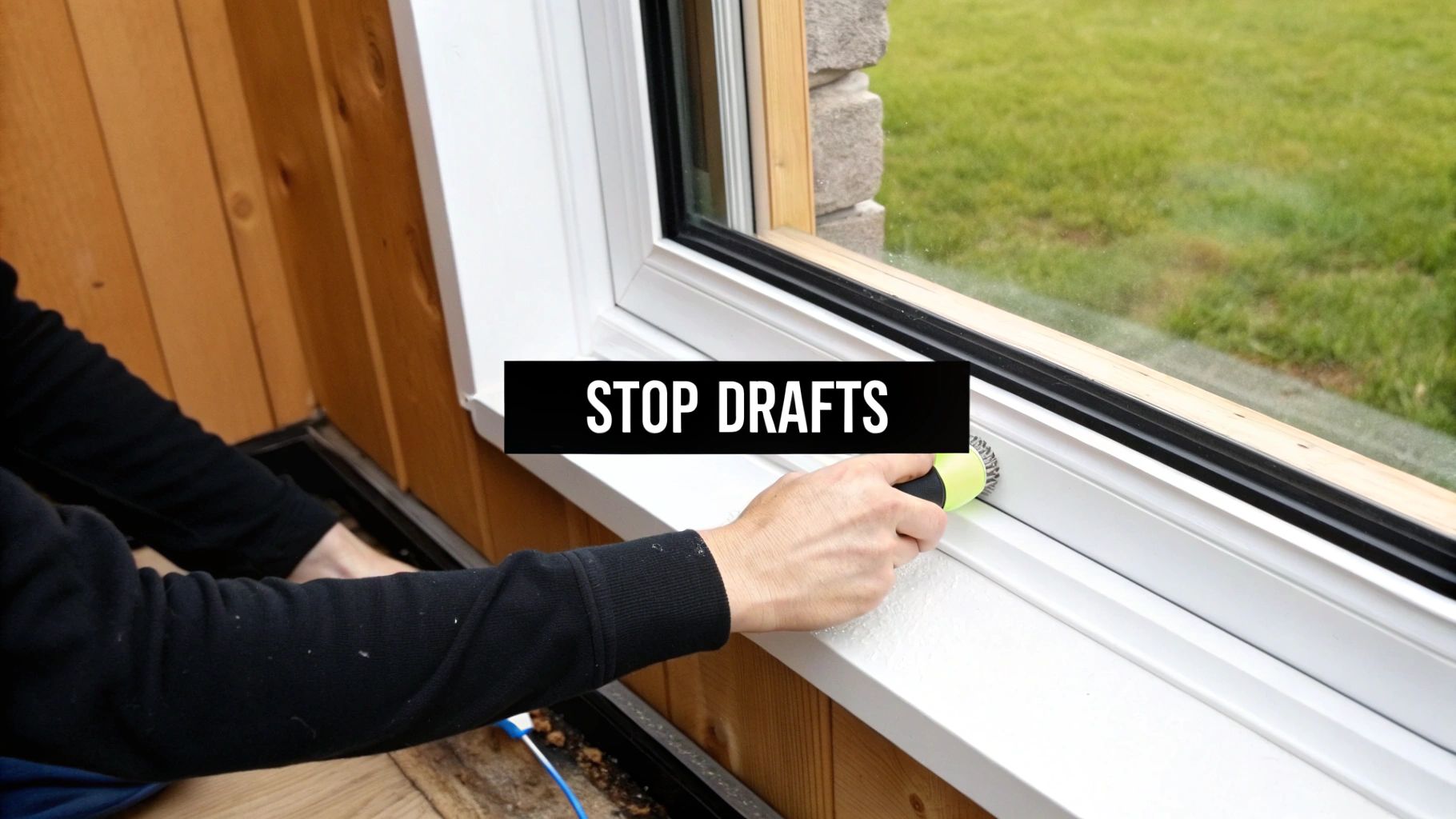
How does it work? Air sealing utilizes various materials, including foam, rubber, and adhesive strips (weatherstripping), to block airflow. Caulking is used to seal larger gaps and cracks around the window frame, while expanding spray foam fills cavities and gaps within the wall structure surrounding the window. By creating this airtight barrier, you prevent conditioned air from escaping during winter and hot air from entering during summer. This reduces the strain on your HVAC system, leading to significant energy savings.
For example, many homeowners find success using readily available Duck Brand weatherstripping kits for standard window sealing projects. For seasonal improvements, 3M indoor window insulation kits offer a temporary yet effective solution. In older homes, particularly, professional air sealing services can often achieve impressive energy savings in the range of 15-30%, demonstrating the significant impact of addressing air leaks.
Here are some actionable tips for effectively sealing your windows:
- Leak Detection: Use a lit candle or incense stick near your windows on a windy day. The flickering flame will indicate air leaks, helping you pinpoint areas needing attention.
- Material Selection: Choose weatherstripping materials appropriate for your climate and the specific gaps you're sealing. For instance, foam tape is ideal for small gaps, while V-seal or compression weatherstripping is better for larger gaps.
- Regular Maintenance: Weatherstripping degrades over time. Replace it every 2-3 years to maintain optimal performance and continue maximizing your energy efficiency.
- Comprehensive Sealing: Seal both interior and exterior gaps for maximum effectiveness. Don't just focus on the inside – addressing exterior gaps is crucial for preventing air and moisture infiltration.
- Professional Assessment: Consider a professional energy audit to identify all potential air leak sources in your home, including those around windows and doors.
Installing proper window sealing and weatherstripping offers several benefits:
- Cost-Effectiveness: This method is very affordable, especially for DIY projects, and offers a high return on investment through energy savings.
- DIY-Friendly: Most homeowners can easily install weatherstripping and caulk, making it a readily accessible energy-saving solution.
- Immediate Results: You'll experience an immediate reduction in drafts and improved indoor comfort once the sealing is complete.
- Improved Air Quality: Proper sealing also reduces the infiltration of dust, pollen, and other pollutants, contributing to better indoor air quality.
However, there are also a few drawbacks to consider:
- Maintenance: Weatherstripping requires periodic maintenance and replacement.
- Installation Errors: Improper installation can affect window operation, so careful attention to detail is essential.
- Temporary Solution: Sealing is a more temporary fix compared to window replacement, which offers a longer-term solution for maximizing energy efficiency.
- Time Commitment: Sealing all windows in a home can be time-consuming, especially for larger properties.
Learn more about Installing Proper Window Sealing and Weatherstripping This resource provides further insights into the importance of proper sealing, especially for sliding glass doors. Implementing this technique is a highly effective way to make windows more energy efficient, saving money, and improving the comfort of your home. Whether you're a homeowner, contractor, or builder, understanding and applying these principles can contribute to creating more sustainable and energy-efficient buildings.
5. Adding Window Films and Tints
One of the most effective ways to make windows more energy efficient is by applying window films or tints. This relatively simple upgrade can significantly impact your home or building's energy consumption, offering a compelling return on investment compared to full window replacement. Window films are thin, durable sheets of polyester, ceramic, or other materials applied directly to the glass surface. They work by reflecting and absorbing solar radiation, reducing the amount of heat that enters your space during summer and minimizing heat loss in winter. This translates to lower energy bills and a more comfortable indoor environment year-round, making them an excellent addition to any energy-efficient home improvement plan.
Window films are available in a wide range of materials, each with its own performance characteristics. Polyester films are generally the most affordable option, providing decent UV protection and glare reduction. Ceramic films, while slightly more expensive, offer superior performance in terms of heat rejection and clarity. They are also more durable and less prone to fading. Specialized metalloid films are also available, though they can interfere with radio signals and may not be suitable for all applications. The variety of options allows you to choose the perfect film to meet your specific needs and budget, whether you're a homeowner, a condo owner, a contractor overseeing new construction, or a commercial property owner looking for sustainable upgrades.
These films also come in various tints, ranging from nearly invisible to darkly shaded options. This allows you to customize the aesthetic of your windows while still reaping the energy-saving benefits. Darker tints provide greater privacy and glare reduction, while lighter tints maintain a higher degree of natural light transmission. For instance, a homeowner in a hot climate might choose a darker tint for west-facing windows to mitigate intense afternoon sun, while opting for a lighter tint on north-facing windows to preserve natural light. This level of customization makes window films a versatile solution for a variety of building types and orientations, appealing to builders, developers, and general contractors alike.
The benefits of window films extend beyond energy efficiency. They can block up to 99% of harmful UV radiation, protecting your furnishings, flooring, and artwork from fading and sun damage. This is a significant advantage for homeowners and commercial property owners alike, as it extends the lifespan of valuable assets. Additionally, window films reduce glare on screens and other surfaces, improving visual comfort and reducing eye strain. This is particularly important for those who spend extended periods working on computers or watching television. Some films even offer one-way privacy during daylight hours, enhancing security and peace of mind.
While window films offer numerous advantages, it's important to consider the potential downsides. Some manufacturers' warranties on windows may be voided by applying film, so it's crucial to check the terms and conditions beforehand. Improperly installed films can also cause thermal stress on the glass, potentially leading to breakage, particularly on older or already stressed windows. While this risk is minimal with professional installation, it's a crucial factor for contractors and builders to consider during new construction or renovation projects. Furthermore, while some films are virtually clear, even lightly tinted options can slightly reduce natural light levels, which might be a concern for some homeowners. Finally, window films have a limited lifespan, typically 10-15 years, before requiring replacement.
Several leading brands offer high-quality window films for both residential and commercial applications. 3M is well-known for its ceramic films, which are often used in commercial buildings to significantly reduce cooling loads. For example, case studies show 3M Ceramic films reducing cooling loads by up to 25% in some commercial settings. Llumar, a brand by Eastman, offers SelectPro films that are popular for residential homes in hot climates. Solar Gard, a Saint-Gobain brand, is often utilized in government buildings for energy efficiency upgrades. Other reputable brands include Huper Optik and Johnson Window Films. While some homeowners may opt for DIY installation, particularly for smaller windows, professional installation is recommended for larger or more complex windows to ensure optimal performance and avoid potential issues. This presents an opportunity for contractors and installers to specialize in this growing market.
When considering window films, remember to choose ceramic films for the best balance of performance and clarity. Avoid metallic films on Low-E windows, as the combination can cause overheating. Always check local building codes and HOA restrictions before installing any window films. Consider lighter tints for north-facing windows to maximize natural light. By carefully considering these factors and choosing the right film for your needs, you can significantly improve your windows' energy efficiency and enjoy a more comfortable and cost-effective living or working environment.
6. Upgrading to Energy-Efficient Window Frames
One of the most impactful ways to make windows more energy efficient is by upgrading the frames themselves. Window frames play a crucial role in a home's overall energy performance, acting as the bridge between the interior and exterior environments. The material of your window frames significantly influences how much heat is transferred through them (thermal conductivity) and how much air leaks around them. Older, traditional frames made of single-pane glass with aluminum or simple wood frames are notorious for poor insulation and air leakage, leading to higher energy bills and uncomfortable drafts. Upgrading to modern, energy-efficient window frames can dramatically improve your home's comfort and reduce energy consumption.
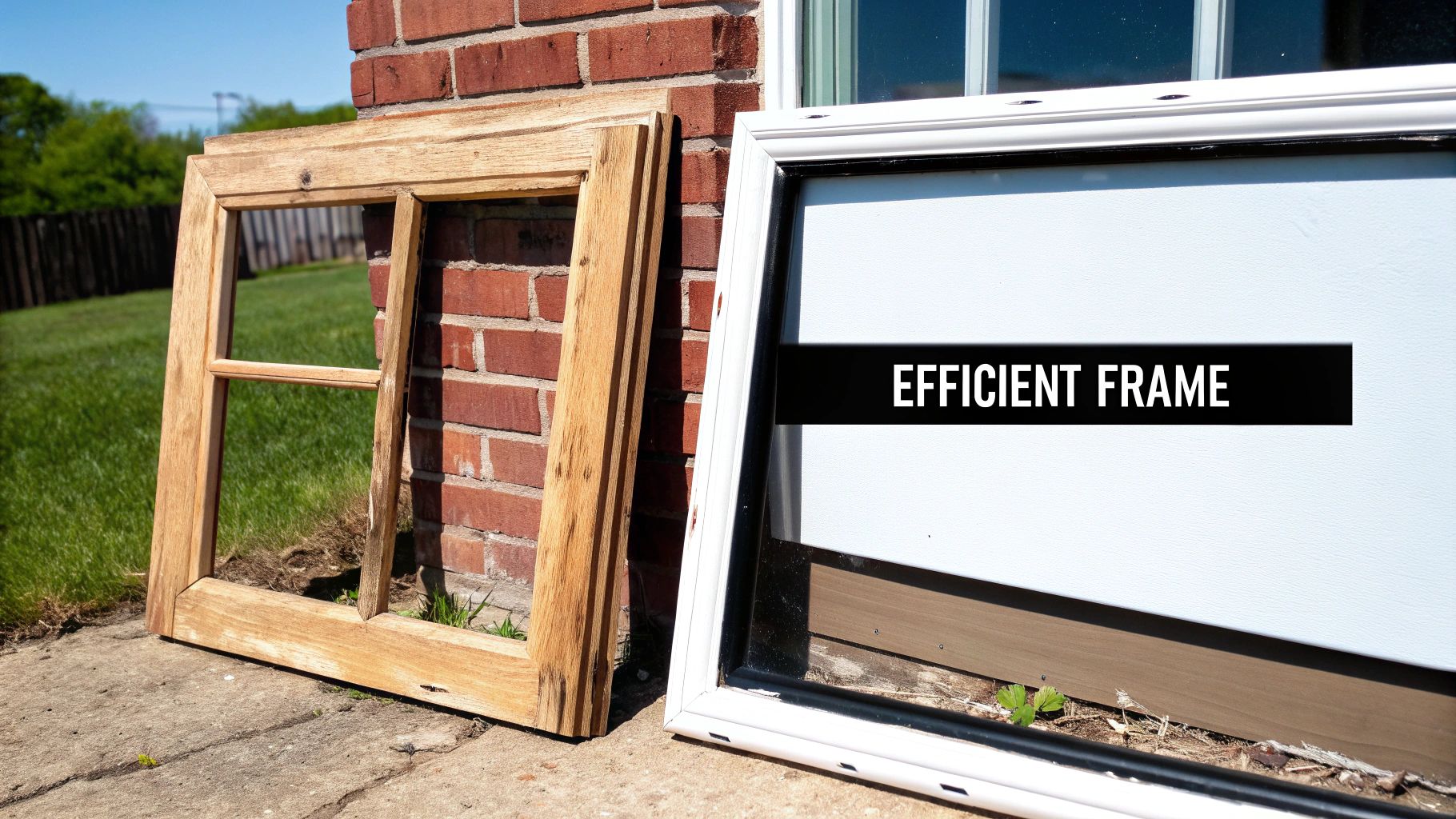
Modern window frame materials offer a significant leap forward in energy efficiency. Fiberglass, vinyl, and thermally-broken aluminum are the leading contenders, each with its own set of advantages. Fiberglass frames boast the best thermal performance and exceptional durability, making them ideal for extreme climates. They resist expansion and contraction due to temperature fluctuations better than other materials, ensuring a consistent seal and minimizing air leakage. Vinyl frames provide excellent insulation at a more affordable price point, making them a popular choice for residential construction in moderate climates. Thermally-broken aluminum frames address the inherent conductivity issue of traditional aluminum by incorporating an insulating barrier within the frame, preventing heat transfer. This makes them suitable for both residential and commercial applications.
Many modern frames also feature multi-chamber designs. These internal chambers create pockets of air, adding another layer of insulation within the frame itself. Composite frames take advantage of the best properties of different materials, often combining the strength and durability of fiberglass with the cost-effectiveness of other materials. For example, some composite frames use a wood interior for aesthetic appeal and a fiberglass or vinyl exterior for superior weather resistance and energy efficiency.
The benefits of upgrading to energy-efficient window frames extend beyond lower energy bills. These frames require less maintenance compared to traditional wood frames, which need regular painting or staining to prevent rot and decay. Their superior air sealing capabilities minimize drafts, enhance indoor comfort, and reduce noise infiltration. Energy-efficient window frames also have a long lifespan, often backed by warranties of 20 years or more. Finally, these upgrades can increase your home's value and enhance its curb appeal.
While the advantages are significant, there are some considerations to keep in mind. Premium materials like fiberglass come with a higher upfront cost compared to vinyl or basic aluminum. Color options might be more limited compared to painted wood frames, although manufacturers are constantly expanding their offerings. Some materials, particularly vinyl, can expand and contract slightly with temperature fluctuations, although this is typically accounted for during professional installation. Speaking of installation, it's typically recommended to hire experienced professionals to ensure proper fitting and sealing for optimal performance.
Examples of successful implementations abound in the market. Marvin’s Ultrex fiberglass frames are known for achieving incredibly low U-factors (a measure of heat transmission, with lower numbers indicating better insulation) as low as 0.20. Milgard’s Tuscany series vinyl frames are a popular choice in residential construction due to their balance of performance and affordability. Kawneer is a well-known provider of thermally-broken aluminum window systems used extensively in commercial buildings.
When deciding which type of frame is right for you, consider your climate and budget. Fiberglass frames are the best performers in extreme hot or cold climates. Vinyl frames offer excellent value for moderate climates. Avoid traditional aluminum frames in cold climates unless they are thermally broken. Look for multi-point locking systems, which engage the sash at multiple points around the frame, creating a tighter seal and minimizing air leakage. Also, consider the impact of frame color on solar heat gain. Darker colors absorb more heat, which can be beneficial in cold climates but detrimental in hot climates. Learn more about Upgrading to Energy-Efficient Window Frames
By carefully considering these factors and choosing the right energy-efficient window frames, homeowners, contractors, and builders can significantly improve a building’s thermal performance, comfort, and value, contributing to a more sustainable and cost-effective living or working environment. This makes upgrading your window frames a crucial step in how to make windows more energy efficient.
7. Installing Window Treatments for Insulation
One of the most effective and accessible ways to make windows more energy efficient is by installing insulating window treatments. These treatments add a layer of insulation to your windows, helping to regulate indoor temperatures and significantly reduce energy consumption. This approach is particularly appealing because it offers a balance of cost-effectiveness, ease of installation, and customizable control over light and privacy. Whether you're a homeowner, contractor, or developer, understanding the benefits and options available with window treatments can dramatically improve a building's energy performance.
Insulating window treatments work by creating a barrier between the window and the interior space. This barrier traps air, preventing heat transfer and minimizing drafts. In winter, they prevent warm air from escaping through the window, and in summer, they block solar heat gain, keeping the interior cooler. The effectiveness of these treatments is measured by their R-value, which indicates their resistance to heat flow. A higher R-value signifies better insulation.
Several types of insulating window treatments are available, each offering unique features and benefits:
-
Cellular Shades: These shades feature a honeycomb construction that traps air within the cells, creating an effective insulation barrier. They come in single, double, or triple-cell configurations, with triple-cell shades offering the highest R-values, reaching up to R-10. Brands like Hunter Douglas Duette are known for their high-performing cellular shades.
-
Thermal Curtains: These curtains are typically made with heavy, tightly woven fabrics and often feature an insulated backing material. This backing reflects heat back into the room in winter and blocks solar radiation in summer. Companies like Thermalogic offer thermal curtains proven to reduce heat loss by as much as 35%.
-
Insulated Shutters: These shutters, often made from wood or composite materials, can incorporate foam or multi-layer construction within the panels, adding significant insulation value. Plantation shutters with insulated cores are a popular choice for energy-efficient homes.
The adjustability of these treatments is a key advantage. Unlike permanent window modifications, window treatments can be adjusted throughout the day and seasonally to optimize energy performance. During the day, you can open them to allow natural light and warmth, while at night, closing them creates an insulating barrier against the cold. They also come in various light-filtering and room-darkening options, allowing you to control the amount of sunlight entering your space and enhancing privacy.
Pros of Installing Window Treatments:
- Increased R-Value: Depending on the type of treatment chosen, you can add an R-value of 2-10 to your windows.
- Cost-Effective: Compared to window replacement, window treatments are a relatively inexpensive way to improve energy efficiency.
- Enhanced Privacy and Light Control: These treatments offer both privacy and the ability to control the amount of light entering a room.
- Easy Installation and Maintenance: Most window treatments are easy to install and require minimal maintenance.
- Significant Energy Savings: They can reduce window heat loss by 25-50%.
Cons of Installing Window Treatments:
- Regular Operation Required: For maximum benefit, window treatments must be opened and closed regularly.
- Potential Light Blockage: When closed, they may block natural light.
- Space Requirements: Installation requires space around the window frame.
- Aesthetic Considerations: The available style options may be limited by your existing décor.
Tips for Maximizing Energy Efficiency with Window Treatments:
- Choose Cellular Shades Wisely: Opt for cellular shades with the most air chambers (double or triple-cell) for optimal insulation.
- Install Close to the Glass: Install treatments as close to the window glass as possible to maximize their effectiveness in trapping air.
- Utilize Light Colors: In summer, use light-colored treatments to reflect heat away from the window.
- Consider Motorization: Motorized options can automate the opening and closing of treatments, ensuring consistent operation and maximizing energy savings.
- Combine with Window Films: For enhanced performance, consider combining window treatments with window films.
Learn more about Installing Window Treatments for Insulation
By carefully considering the various types of window treatments and implementing these tips, homeowners, contractors, and builders can effectively improve energy efficiency, reduce energy costs, and enhance the comfort and functionality of any space. This makes installing window treatments a crucial consideration for anyone looking to make windows more energy efficient. Whether you are building a new home, renovating an existing one, or simply looking to improve your current property's energy performance, insulating window treatments offer a compelling solution that deserves a place on your list of energy-saving strategies.
8. Smart Window Technology and Automated Controls
Smart window technology represents a significant leap forward in how to make windows more energy efficient. By automating and optimizing window performance based on real-time conditions, these systems offer substantial energy savings, enhanced comfort, and a modern, convenient approach to light and temperature control. This technology encompasses a range of solutions, from electrochromic (smart glass) windows that tint electronically to automated window treatments and smart home integration systems. These systems work in concert to dynamically adjust to changing weather patterns, time of day, and even occupancy within a building, eliminating the need for manual adjustments and maximizing energy efficiency.
The core of this technology lies in its ability to respond dynamically to external factors. For example, electrochromic glass, often referred to as “smart glass,” utilizes a low-voltage electrical current to change its tint. On a hot, sunny day, the glass can darken automatically to reduce solar heat gain, minimizing the strain on air conditioning systems. Conversely, on a cloudy day or during cooler hours, the glass returns to its clear state, maximizing natural daylight and reducing the need for artificial lighting. Automated window treatments, such as motorized blinds and shades, work similarly. Equipped with sun-tracking capabilities, these systems adjust their position throughout the day to optimize light and heat levels, further enhancing energy efficiency. The “brains” of these operations reside in smart sensors and integrated control systems. These sensors constantly monitor temperature, light levels, and even occupancy within a space, relaying this information to a central control system. This system, often integrated with the home’s thermostat and other smart home devices, then automatically adjusts the windows and treatments to maintain optimal conditions.
Successful implementations of smart window technology are becoming increasingly prevalent. View Dynamic Glass, for example, has been installed in numerous commercial buildings, demonstrably reducing HVAC loads by as much as 20%. In luxury homes, Lutron automated shading systems provide precise control over light and heat, enhancing both energy efficiency and occupant comfort. SageGlass electrochromic windows have become a key component in net-zero energy buildings, showcasing the potential of this technology to drastically reduce energy consumption. These real-world examples highlight the tangible benefits of incorporating smart window technology into both residential and commercial spaces.
For homeowners, condo owners, and builders interested in exploring smart window solutions, there are several key considerations. First, prioritize south and west-facing windows when considering smart glass, as these orientations typically experience the greatest solar heat gain. Ensure a reliable power supply for electrochromic systems to guarantee consistent performance. If budget is a concern, starting with automated treatments before investing in smart glass can offer a more cost-effective entry point to automated window control. Look for systems that integrate seamlessly with existing home automation platforms to streamline control and maximize efficiency. For larger projects, consider pilot installations to assess performance and refine control strategies before implementing a whole-house solution.
While the benefits are substantial, it's important to acknowledge the potential drawbacks. The initial cost of smart window technology, particularly electrochromic glass, can be significant, ranging from $50 to $100+ per square foot. These systems also require electrical connections and may necessitate ongoing maintenance. As a relatively new technology, long-term performance data is still being accumulated. Finally, some systems may require professional programming and setup, adding to the overall cost.
Despite these challenges, the advantages of smart window technology are compelling. It optimizes energy performance automatically, eliminating the need for manual operation and providing real-time adjustments to changing conditions. These systems can integrate with solar panels and energy storage systems, further enhancing energy independence. The convenience and enhanced comfort provided by automated control contribute significantly to improved indoor environments.
Companies like View Inc. (Dynamic Glass), SageGlass (Guardian Glass), Lutron Electronics, Somfy, and Nest Labs (Google) have been instrumental in popularizing and advancing smart window technology. Their innovative products and solutions are driving the adoption of this technology and pushing the boundaries of energy-efficient building design. Whether you're a homeowner embarking on a renovation, a builder constructing a new home, or a commercial property owner seeking to reduce operating costs, exploring smart window technology is a crucial step in creating more sustainable and comfortable built environments. By understanding the features, benefits, and considerations associated with these systems, you can make informed decisions that contribute to a more energy-efficient future.
Energy Efficiency Strategies Comparison
| Strategy | Implementation Complexity 🔄 | Resource Requirements ⚡ | Expected Outcomes 📊 | Ideal Use Cases 💡 | Key Advantages ⭐ |
|---|---|---|---|---|---|
| Installing Double or Triple-Pane Windows | High – professional installation, potential frame reinforcement | High upfront cost, specialized materials | Large energy savings (25-50%), long payback (8-15 yrs) | New builds or major renovations in extreme climates | Excellent insulation, noise reduction, increased home value |
| Applying Low-E (Low-Emissivity) Coatings | Moderate – factory or retrofit application | Moderate – coating materials or films | Moderate energy savings (10-25%), UV protection | Both new and existing windows for thermal improvement | Cost-effective retrofit, maintains natural light |
| Using Inert Gas Fills (Argon/Krypton) | Moderate – sealed during window manufacturing | Moderate – added cost of inert gases | Incremental insulation improvement (5-15%) | Multi-pane windows seeking improved insulation | Invisible, maintenance-free, environmentally safe |
| Installing Proper Window Sealing and Weatherstripping | Low – DIY possible, some professional options | Low – inexpensive materials, possible professional service | Immediate draft reduction, energy savings (10-20%) | Existing windows with air leaks, cost-conscious upgrades | Very cost-effective, DIY-friendly, quick results |
| Adding Window Films and Tints | Low to Moderate – DIY or professional installation | Low to Moderate – materials and installation | Cooling cost reduction (10-30%), UV and glare control | Retrofit for energy savings and glare reduction | Affordable alternative to window replacement |
| Upgrading to Energy-Efficient Window Frames | High – requires professional installation and new frames | High – premium frame materials | Significant thermal improvement, better air sealing | New construction or replacing old frames | Durable, low maintenance, improves home value |
| Installing Window Treatments for Insulation | Low – easy installation, mostly DIY | Low to Moderate – cost varies by treatment | Reduces heat loss 25-50%, adds R-value (R-2 to R-10) | Rental and existing homes needing quick insulation | Inexpensive, adds privacy and light control |
| Smart Window Technology and Automated Controls | Very High – electrical work and tech integration | Very High – costly systems and setup | Large HVAC energy savings (20-60%), automated control | Premium homes, smart home systems, high-tech upgrades | Convenience, real-time optimization, comfort enhancement |
Making Smart Choices for Energy-Efficient Windows
Making your windows more energy efficient is a multifaceted approach, but the rewards are well worth the effort. From simple fixes like adding weatherstripping and window films to significant upgrades like installing double or triple-pane windows with low-E coatings and inert gas fills, each step contributes to a more comfortable and energy-saving home. Remember, the most effective strategies depend on factors like your budget, local climate, and the existing condition of your windows. Understanding key metrics like U-factor and considering aspects such as frame materials and specialized coatings will empower you to make informed decisions tailored to your specific needs. By mastering these concepts and implementing the appropriate solutions, you'll not only reduce your energy bills and enhance your home's comfort but also contribute to a greener future by minimizing your environmental impact. These improvements increase property value and provide a more comfortable living environment.
How to make windows more energy efficient starts with evaluating your current windows and identifying areas for improvement. Whether you're undertaking a complete renovation, building a new home, or simply seeking to enhance your existing property, taking proactive steps towards better window efficiency is a valuable investment. It translates to long-term savings, increased comfort, and a healthier planet for us all.
Ready to take your window efficiency to the next level? Gladiator Window and Doors specializes in high-quality, custom-made windows designed for optimal energy performance. Visit Gladiator Window and Doors today to explore options that perfectly complement your energy-saving goals and enhance the beauty and comfort of your home.

















